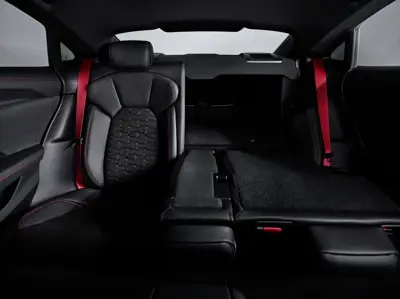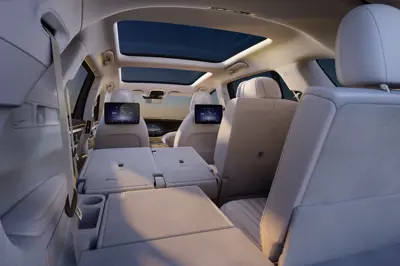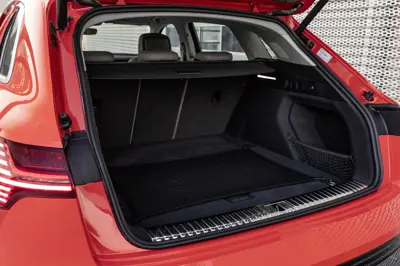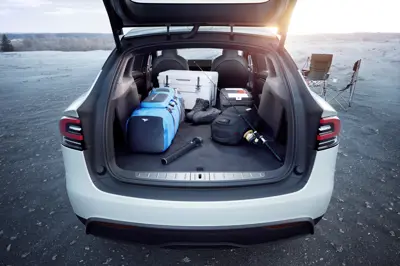- Cargo & Towing Capabilities
- Interior Cargo
- Frunk Cargo
- Roof Cargo
- Hitch Cargo
- Pickup Bed Cargo
- Towing
Interior Cargo
Interior cargo refers to the cargo space enclosed and protected by the car's body and windows. Internal cargo can vary depending on the model and the car's configuration.
What are the benefits and drawbacks of having cargo inside the car? How can the interior cargo space be maximized and secured? This article will answer these questions and provide tips for using the interior cargo space of the car effectively.
Capacity
The cargo capacity varies greatly depending on the car type and the manufacturer's design choices.
Most cars allow the rear seats to be folded flat, increasing cargo capacity. Typical configurations include a 40:60 split or a 40:20:40 split, enabling you to fold down 3, 2, or 1 of the back seats.
For 3-row cars, both the third and second-row seats can typically be folded flat.
The following table lists the trunk and maximum space with rear seats folded flat for many popular models.
| Model | Trunk size | Max size |
|---|---|---|
| Lucid Air Dream Edition | 456 liters | 627 liters |
| Tesla Model 3 | 594 liters | 1217 liters |
| Kia EV9 | 333 liters | 2393 liters |
Several models have hidden storage in the trunk below the floor.
Securing Cargo
Many models have securing hooks in the trunk to fasten storage, while others do not. The driver can attach a net or other securing mechanism to the hooks to ensure the cargo does not move or become a hazard in the event of a crash.
Camping
Many EVs are great for camping since they can provide heating when parked. Many have a camping mode for the air conditioning.
Some manufacturers even offer mattresses to use in the rear.
Advantages of Interior Cargo
Interior cargo has several advantages that make it preferable to other options, such as:
Security
Interior cargo is more secure and safe than exterior cargo, as it is less visible and more difficult to access by thieves or vandals. It is also less likely to fly off or get damaged by weather, road debris, or collisions.
Accessibility
Interior cargo is more accessible and convenient than exterior cargo, as it does not require climbing onto the roof or reaching behind the car to load or unload items. It can also be accessed from inside the car through the rear seats or doors, which is useful in tight parking spaces or bad weather conditions.
Fuel Economy
Interior cargo impacts the car’s energy consumption less than exterior cargo, as it does not affect its aerodynamics or wind resistance. Exterior cargo carriers, especially roof cargo carriers, can increase the car’s drag and reduce energy efficiency by up to 25%. Interior cargo can also lower the car’s center of gravity and improve its stability and handling.
Possible Limitations of Interior Cargo
Interior cargo has its drawbacks. Some of the limitations and challenges of using the interior cargo space of the car are:
Weight Capacity
Interior cargo has a limited capacity that cannot be exceeded without compromising the car's performance, safety, or legality. It cannot exceed the car's maximum payload, which is the total weight of the passengers and the cargo that the car can carry.
Compatibility
Interior cargo may not be compatible with all types of items that the owner may want to store or transport. It may be unable to accommodate large, bulky, or irregular items that do not fit inside the car or may damage the car’s interior. It may also not be suitable for dirty, wet, or smelly items, as they may stain, damage, or contaminate the car’s interior.
Comfort
Interior cargo may reduce the comfort and convenience of the passengers and the driver, as it may take up space that would otherwise be used for seating, legroom, or storage. It may also create noise, vibration, or odor that may disturb passengers and drivers. It may also affect the car’s climate control system by blocking the air vents or windows.








